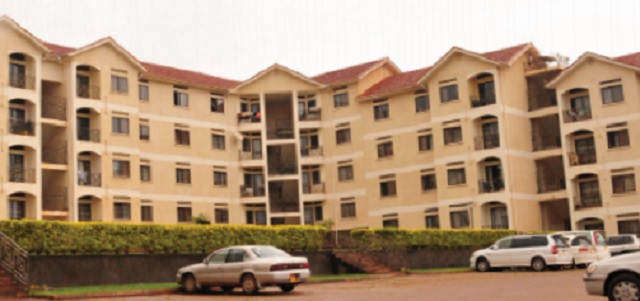
Supply of residential apartments in prime suburbs could exceed demand over the next two years
Kampala, Uganda | ISAAC KHISA | Demand for residential properties in the secondary residential surburbs of greater Kampala has risen up on the back of increased stock of newly constructed properties, according to the latest report from the property agency Knight Frank.
The 2018 half year report shows that demand for residential properties in the middle income segment grew by 9% particularly in Kira, Najjera, Kyanja, Namugongo and Naalya, with selling and renting ranging between Shs 100m –Shs 200 million and Shs 400,000 – Shs 800,000 per month, respectively.
“It is also interesting to note that approximately 80% of the new stocks of apartment blocks available on the market in these areas were sold during first half of 2018,” the report says.
There has also been a 5% year on year increase in occupancy rates for prime residential suburbs of Nakasero, Kololo, Naguru and Bugolobi owed to the completion of pipeline projects in the second half of last year.
The government, which has brought forward its final investment decision for a planned 1,445-kilometer (900-mile) crude-export pipeline to the end of 2018 from June 2019 via Tanzania, plans to start oil production by 2022, two years later than earlier planned.
The report, however, projects that the supply of residential apartments in the prime suburbs of Nakasero, Kololo, Naguru and Bugolobi could exceed demand over the next two years, if the existing and newly completed developments are not absorbed by the market over the next six months.
This was the same trend with the office space. Demand for office space registered an increase, with Grade A office space over the last 12 months currently standing at 92% compared with Grade B space at 78%.
This is a 2% year on year growth in Grade A occupancy compared to the 90% recorded in the first half of 2017.
Currently, there’s limited vacant Grade A space in the core Central Business District and secondary office locations available on the market.
Demand for Grade B office space decline
On the contrary, the Grade B office space saw occupancy rates register a 7% decline during the first half of 2018 from 85% recorded during the same period last year as organisations moved either to acquire their properties or relocated to properties with better facilities and amenities. This has in turn increased the available stock of Grade B space by approximately 2%.
This increase in space of older Grade B stock coupled with the relatively low demand for the same has put further downward pressure on rental rates with Grade B gross rents (excl. taxes) now ranging between $10 and $12 per square metre per month depending on the specific attributes of the properties.
On the same note, the industrial property sector saw a 10% decline in demand for space over the first half of 2018 in line with the slowdown in economic activity with some corporate organizations and private businesses downsizing, and opting to take up smaller and or cheaper warehouses.
There was also a lot of speculative development of logistics and storage facilities on the back of anticipated demand from the oil and gas sector, but this has not quite materialized.
“It is also likely that the oil and gas sector will have specific needs and requirements which will have to be built to suit and not speculative,” the report states.
The traditional industrial areas, (1st – 8th Street), Ntinda, Nakawa and Luzira Industrial areas continue to remain the preferred locations for businesses requiring only storage space as opposed to the manufacturers who have built owner occupied premises in the Namanve Industrial Park and or along Jinja Road.
Likewise, a lot of the older stock in the traditional industrial areas is being extensively renovated or plots redeveloped with more modern storage and showroom space.
This trend, the report says, will continue as owner occupiers relocate to designated industrial and business parks.
This new development comes at the time the Bank of Uganda projects the economic growth prospects to remain favourable in the medium term buoyed by multiplier effects of public infrastructure investments, higher agricultural productivity, increase in household consumption and the overall strengthening of the global economy.
Outlook
Looking forward, the supply gap in Grade A office space is expected to narrow in the medium term given the number of good quality developments in the pipeline.
“Approximately 65,000 m2 of Grade A space is expected on the market during the next 12 months with at least 50% of it being built for owner occupation by organizations such as law firms and government parastatals,” the report says.
 The Independent Uganda: You get the Truth we Pay the Price
The Independent Uganda: You get the Truth we Pay the Price


